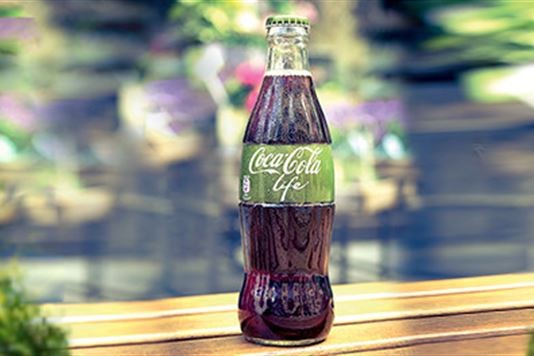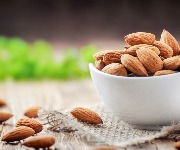Introducing Coca-Cola Life: the new 'healthy' coke drink

In September Coca-Cola will launch its new drink, Coca-Cola Life. But does the green packaging reflect the product’s qualities?
In 2013 Coca-Cola piloted its new drink, Coca-Cola Life, in Argentina and Chile. This September, it’ll be bringing the drink to European markets. This will be the first Coca-Cola product to be launched in Great Britain since Coke Zero arrived in 2006.
A spokesperson for The Coca-Cola Company told loveFOOD that the aim of the launch was to offer “more reduced-, low- and no-calorie options [that will] inspire happier, healthier lives.”
Coca-Cola Life contains 36% less calories compared to full sugared colas, due to a 37% reduction in sugar. Instead, Stevia leaf extract has been used to further sweeten the drink. This “naturally-sourced” sweetener was legalised in the EU during 2011, and is currently used in the Coca-Cola products Sprite and Glacéau vitamin water.
How much sugar is in Coke Life?
The original Coke contains 10.6g of sugar per 100ml, while Coke Life contains 6.7g of sugar per 100ml (7g per 100g). That’s still quite a lot of sugar – you’d be downing 22.1g in a 330ml can. The RDA of sugars is 90g, so a can of Coke Life would make up around a quarter of that allowance.
Coca-Cola commented that it “fundamentally believes that all of [its] products can be enjoyed as part of an active, healthy lifestyle that includes a sensible, balanced diet and regular physical activity.” It also pointed to the zero-sugar and zero-calorie Coke alternatives, Diet Coca-Cola and Coca-Cola Zero.
As part of a healthy lifestyle, sugary foods can indeed be enjoyed safely. After all, who doesn’t like a slice of chocolate cake or a bag of sweets from time to time?
But does Coke Life’s name and image give the wrong impression to people looking to choose healthier options?
The new brand
We recently reported on research into food marketing from the States, which suggested that buzzwords are used to make people think a product is healthier than it actually is. So what about that word ‘Life’ dangling on the end of ‘Coca-Cola’?
Professor Temple Northup, who conducted the market research mentioned above, suggests that both the colour and the name of the product implies that the drink "is in some way good for you", rather than a "less unhealthy version of a product that is inherently unhealthy."
That distinction between presenting a product as 'healthy' and 'less unhealthy' is an important one to make, says Prof Northup. "When products are labelled low fat," he says, "people tend to eat more because they think it’s not bad for them." So the effect Coke Life could have is that people may buy and drink more of it than regular Coke, under the impression that it's a lot better for them.
The new packaging
The green packaging is another concern. Prof Northup comments: “Green is the colour of things that are actually good for you: lettuce, kale, broccoli. Being ‘green’ is to be environmentally concerned.” So there are links being built to associate “positive attributes” with the drink, he says, when really it does still contain quite a lot of sugar.
Coke says that the green packaging was designed as “an eye-catching brand identity”, and that it has had positive feedback about the colour and the name. They made it clear that nutritional information will be displayed clearly on the front of the pack, including “guideline daily amounts and absolute amounts per serving.”
Here's my two pennies' worth – at a time when there’s talk of putting warning labels on fatty foods, it’s right that Coke is offering more options for people worried about their health. But does Coke Life do enough to help them reduce their sugar intake?
Ultimately, the responsibility of what an individual consumes rests on their own shoulders. But does the packaging and name of Coca-Cola Life give the wrong impression? Let us know your thoughts in the Comments below.
You might also like:
Misleading food marketing leads healthy eaters astray
Most Recent
Comments
Do you want to comment on this article? You need to be signed in for this feature








